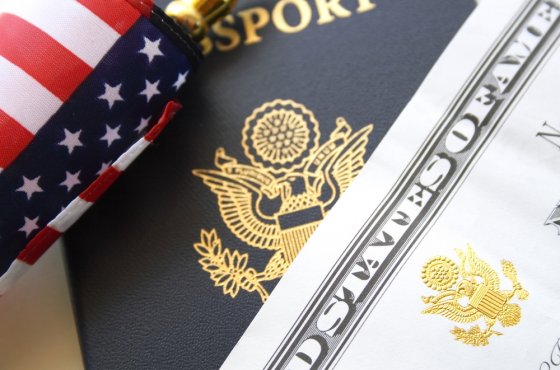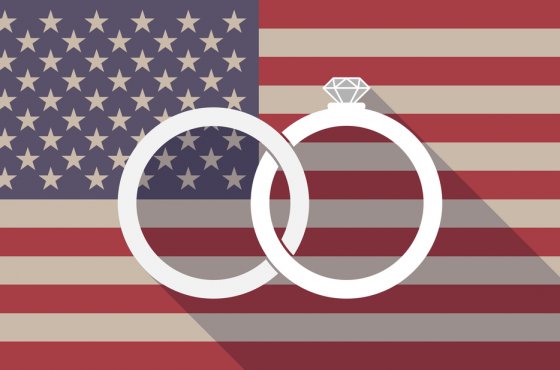Coronavirus was in the US long before it was discovered: could a cold in January and February be COVID-19
With the recent news that two Californians died from COVID-19 back in February, three weeks before the first US death from the disease was registered, it became clear that coronavirus spread in the United States long before it was discovered . Writes about this Fox News.

Photo: Shutterstock
Many people have a question: is this strange cough or relapsing fever, which was at the end of January or February, could be COVID-19. Experts say that this is not impossible, but not exactly. At that time, the virus was certainly circulating throughout the country. However, it is not known how widespread it was, especially compared to other respiratory diseases in the winter season.
“The arrival of the coronavirus in the U.S. coincided with the peak of flu season, so the symptoms you had were very easy to confuse with the flu,” said Matteo Chinazzi, a researcher at Northeastern University in Boston who is part of a team that models the spread of the virus. Worldwide.
Timeline of COVID-19
SARS-CoV-2 coronavirus was first detected in the United States in January. This was a 35-year-old man who was examined on January 19, four days after returning from Wuhan to Washington State.
But only a month later, on February 26, the Centers for Disease Control and Prevention (CDC) confirmed the first known case of coronavirus infection in a California resident who had no known contact with the infected. Just a few days later, a group of researchers studying samples for influenza testing in Washington State discovered a sample that contained the genetic sequence of the coronavirus that causes COVID-19. It belonged to a teenager who contracted the virus.
Then it became clear that the first cases of the spread of the virus among the population in the United States were not at the end of February, but in January, when only cases related to trips to China were identified and recorded.
On the subject: Similarities and differences: how to distinguish a common allergy from coronavirus
This is evident for several reasons. First, the small genetic differences between the coronavirus in a teenager from Washington state and in samples from China suggest that the virus came from Wuhan and circulated, gradually mutating for about five weeks, an infectious disease researcher Trevor Bedford from the Research Center wrote on her blog. Fred Hutchinson.
Secondly, the latest mortality data also indicate the spread of coronavirus among the population in January. The first recorded death from coronavirus in the United States was believed to be a 50-year-old man who passed away on February 28 in King County, Washington. But an autopsy in Kirkland, Washington, showed that the first known deaths from coronavirus in the United States occurred on February 26.
However, on April 22, the CDC confirmed, based on the autopsy, that two people in Santa Clara County (California) died from COVID-19 on February 6 and 17. None of them had a history of traveling to China, and are believed to have been infected by another person. Since COVID-19 usually has an incubation period of 5 to 14 days and an average person is sick for another 2 weeks before death, February deaths indicate that these people fell ill with COVID-19 in mid and late January.
Based on these data, we can say that the virus came to New York in early January, and to California by mid-January.
“Our model seems to indicate that the first virus appeared in New York around the beginning of January, and in general we see that by the end of February, most states were infected.” Chinazzi said.
The first confirmed human-to-human coronavirus transmission in New York was with a lawyer from Westchester County who went to the hospital on February 27th. Genetic studies of virus samples in New York now show that community spread began by the end of January, mainly due to travel from Europe.
Epidemiologists in Colorado believe the coronavirus appeared in the Rockies sometime between January 20 and 30, according to estimates by Elizabeth Carlton, an epidemiologist at the University of Colorado School of Public Health. Firstly, simple calculations based on when the cases were first discovered in Colorado indicate that these people fell ill during this period of time. Secondly, the models that Carlton and her colleagues use to track and predict cases in Colorado are consistent with the idea that the first cases in the state arose between January 20 and January 30.
“Colorado's ski season starts in January, so it's not hard to imagine that someone from one of the West Coast states came to Colorado to ski and brought the disease,” Carlton said. “This is just one of many possible options.”
Data on excessive mortality compared to previous years can also help identify when a coronavirus arrived in a particular state. In Florida, for example, The Sun-Sentinel reported that a surge in pneumonia-related deaths in mid-March could indicate a nascent outbreak of coronavirus, which began at least in late February.
Was there a cough in January-February of COVID-19?
Given the differences in the timing of the arrival of the virus and the severity of the outbreaks at the moment, the likelihood that any respiratory disease in January or February may be COVID-19 depends on where you live: it is much more likely that a Manhattan resident in New York contracted the virus compared to a Manhattan resident in Kansas.
The flu season overshadows the problem. There is no national influenza statistics information service and many people with the flu do not have a test to confirm the diagnosis, so no one knows exactly how many cases of the flu occurred in January or February. But, according to CDC estimates, 39 to 56 million cases of influenza were reported in the United States between October 2019 and April 2020. This means that at the peak of the flu season in January and February, the number of cases of influenza virus infection was probably much higher than the cases of coronavirus in the United States.
On the subject: 20 professions with the highest risk of coronavirus infection
It is also difficult to extrapolate today's numbers to estimate the prevalence of coronavirus in January and February. This is because many cases of COVID-19 are still not diagnosed during testing, and researchers still do not know how many people infected with coronavirus experience only mild symptoms or have no symptoms at all, said Carlton and Cinazzi.
An antibody test that looks for immune system proteins produced when the body fights the virus can approximately determine the number of people exposed to coronavirus. A study that selected grocery store employees and tested their blood for antibodies to coronavirus found that 1 in 7 people in New York State and almost 1 in 4 in New York City were exposed to coronavirus.
It's unclear whether these results will generalize to the general population—for example, people who stay home to avoid even grocery store visits may have lower infection rates. However, given that the virus is spreading exponentially through the population, extrapolating back to January or February significantly reduces the number of active cases, meaning it's likely only a small fraction of people in the city had COVID-19 at that time.
This means that if you had respiratory symptoms in New York in January or February, it is more likely that it was the flu or a seasonal circulating coronavirus.
Elsewhere, the likelihood that the coronavirus was in January or February is even less likely. In two controversial studies in California, the percentage of people already exposed ranged from 2,5% to 4,2% in Santa Clara County and up to 5,6% in Los Angeles, but these data were criticized as likely overstated.
In Colorado, epidemiologists estimate that 1% of the population already has COVID-19. According to Carlton, a cough or fever in February was more likely to be COVID-19 than in January, simply because over time there would be more circulating cases. But there is great uncertainty in the 1% estimate, given the limitations in testing and the wide range of severity of symptoms, Carlton said.
“That’s the question that everyone is interested in answering,” she said. “How many people actually had this?”
Read also on ForumDaily:
Similarities and differences: how to distinguish a common allergy from coronavirus
Can COVID-19 be treated by plasma transfusion and how is it obtained
The vaccine from COVID-19 has already been created and tested: when will it be publicly available
The US economy showed the largest decline in 10 years due to coronavirus: what's next
Subscribe to ForumDaily on Google NewsDo you want more important and interesting news about life in the USA and immigration to America? — support us donate! Also subscribe to our page Facebook. Select the “Priority in display” option and read us first. Also, don't forget to subscribe to our РєР ° РЅР ° Р »РІ Telegram and Instagram- there is a lot of interesting things there. And join thousands of readers ForumDaily New York — there you will find a lot of interesting and positive information about life in the metropolis.











